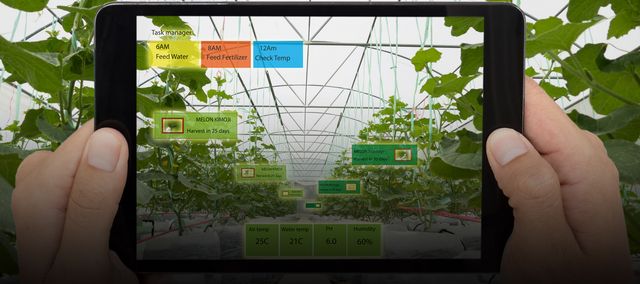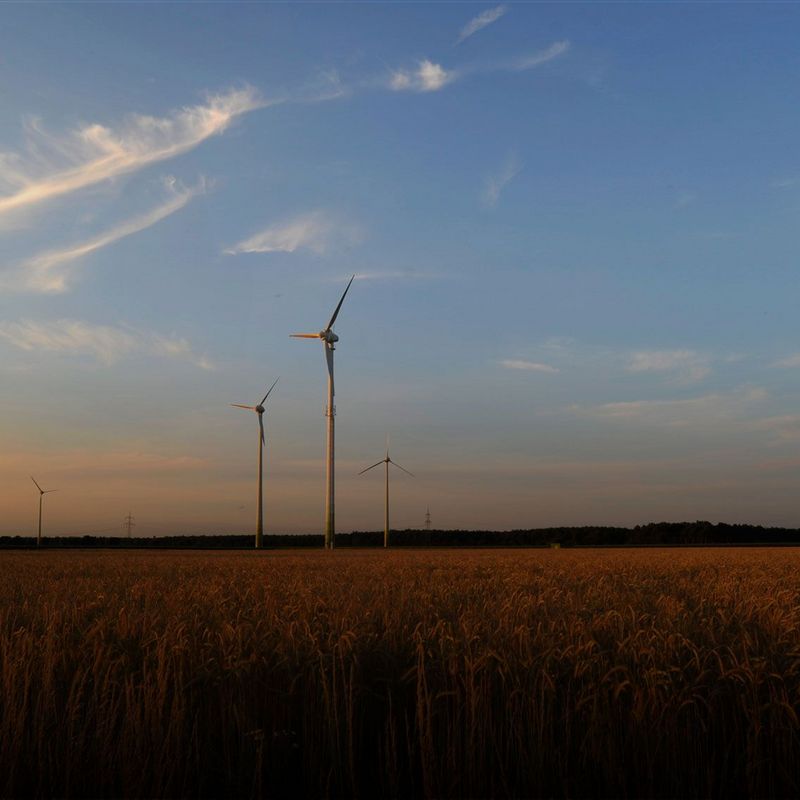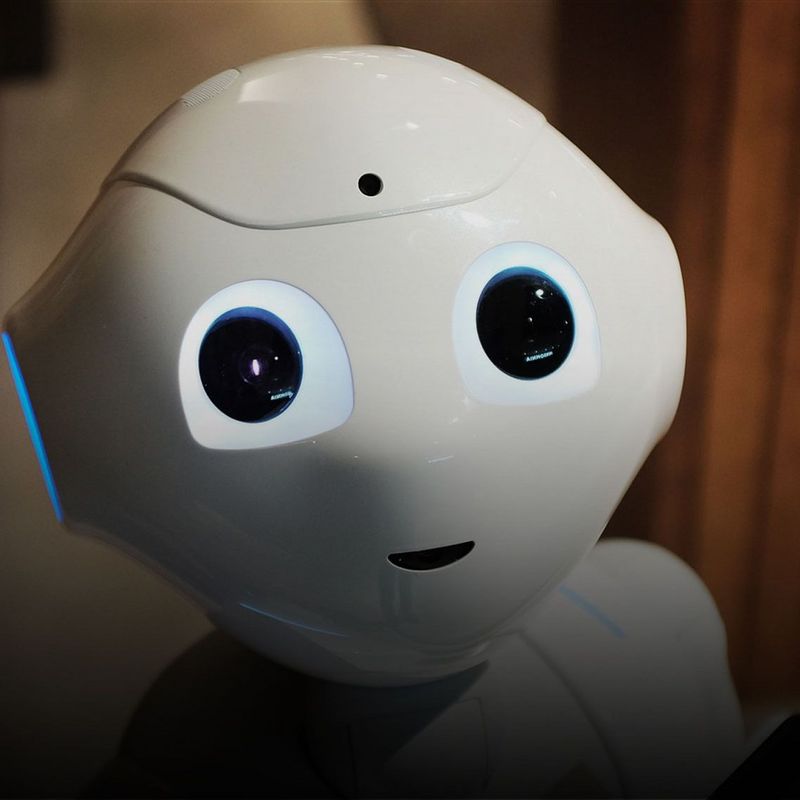3 Mai 2018
The days in which farmers used to yoke up their horse teams in March are long gone. Digitalisation has long since left its mark on the agricultural sector. Robots help muck out stables; semi-autonomous tractors plough the fields; automated milking parlours and networked farm management systems relieve farmers of some of their burden and make farming more efficient. And yet, animal welfare and environmental protection are also high on the digital agenda.
When strawberry grower Martin Bauer wants to know if his strawberries need watering, he no longer needs to check out every field individually. These days, a quick glance at an app suffices. Sensors on his 40-acre strawberry fields in Weinstadt in the state of Baden-Württemberg measure the moisture content in the soil and the temperature under the polytunnel tarps and just above ground level. The data are relayed wirelessly to his smart phone. This saves him a huge amount of work. He used to have to spend precious weeks on night-time forays to the fields to check that everything was as it should be. The idea behind the sensor system is to provide support in the form of an early warning system. It raises an alarm when drought, heat or frost are threatening the crop.
And long gone are the days in which temperature and humidity sensors were the only digital technologies used on the farm. Bovine diseases are identified in the cow’s stomach by sensors as soon as they arise. Drones analyse soil composition or detect weed infestations, which can then be treated in a targeted manner. This reduces outlay on pesticides and protects the environment.
For romantics and readers of novels that paint golden pictures of country life, such scenarios may seem appallingly technocratic. But these people too benefit from more efficient processes in agriculture - such at any rate is the argument put forward by proponents of the digital transformation of farming. After all, even as the amount of available arable land is dwindling due to soil erosion or salination, demand for food is growing. By 2050, the world population will have risen to more than 9 billion. It will be beyond the scope of traditional agriculture to feed them all.
Professor Hans W. Griepentrog of the University of Hohenheim in Stuttgart freely admits to doubting that digital technologies will be able to completely resolve food shortages caused by conflicts and climate disaster. This is because he expects them to prevail in the first instance in high-wage regions such as Western Europe, North America and Japan. However, the agricultural engineer and expert in robotics and precision farming is convinced that digital technologies can make agriculture more efficient, more productive, lighter on resources and more environmentally friendly in such regions, in the first instance by helping farmers arrive at a better understanding of the processes on and in their fields. “In this respect, digitalisation is creating a whole array of completely new opportunities,” says Griepentrog.
“It takes no more than rain to fundamentally change the nutrient conditions and concentrations in a field.”
Fluctuations in soil composition and biomass can be determined down to an accuracy of a single square metre and mapped using high-resolution satellite images. Using GPS-controlled semi- and fully automated farm equipment, the farmer can apply the right amount of fertiliser exactly where it is needed rather than, as used to be the case, spreading it evenly across an entire field. This saves money and prevents overfertilisation - and ensures that fewer nitrates leach into groundwater or the surrounding rivers.
The basic idea behind what has become known as precision farming is to determine differences in soil composition, vegetation and weed density as precisely as possible, with the aim of applying fertilisers and pesticides only where and in the quantity in which they are actually needed.
And the more refined the measuring procedures, the better the farmer can respond to the individual conditions on the ground. After all, unlike in a smart factory, for instance, conditions in the fields are constantly changing. “It takes no more than rain to fundamentally change the nutrient conditions and concentrations in a field,” Griepentrog says. Tractors equipped with sensors measure the nutrient content of the plants in real time as they trundle over the fields – and a computer calculates the fertiliser requirement. The more data the farmer can collect in the future and the more comprehensive their accumulation in a cloud and their evaluation using Big Data solutions, the faster the farmer can respond to pests and plant diseases. If, for instance, pesticides or insecticides can be deployed in a targeted way at the right time, the pollution load on human consumers can also be significantly reduced.
“Until now we’ve always adapted the natural environment to the technology; now we’re moving toward doing the opposite.”
A scientific report of the European Parliament of December 2016 also places great hopes in the potential and methods of precision farming. The authors of the report have calculated that fuel consumption on farms could be reduced by 10 percent, soil erosion slashed from the current 17 tonnes per hectare to a single tonne, the use of herbicides cut by up to 80 percent and nitrate residues in the soil reduced by up to 50 percent.
In the future, autonomous robots will also roam the fields, playing their part in making agriculture more sustainable. A concept which Griepentrog and his colleagues have been researching for years. Unlike heavy tractors, the electrically operated robots, which, at around 50 kilos, are comparatively light, will not contribute to soil compaction. And whereas for conventional agricultural machinery every tree on the field is an obstacle, the small and agile robots can simply drive around them. “This will even make it possible to reintroduce trees, hedgerows and lakes,” Griepentrog explains. Signalling the return of biological diversity to places where it has previously been supplanted by monocultures. For Griepentrog, this is a paradigm shift: “Until now we’ve always adapted the natural environment to the technology; now we’re moving toward doing the opposite.” It is with this in mind that the agricultural scientist and his colleagues have developed procedures with which a robot armed with a camera and image analysis can do more than merely identify weeds. They are even able to distinguish “good” weeds from “bad”. After all, not all weeds have an equally negative impact on harvests. Some grow only a few centimetres tall, prevent the soil from drying out and can reduce the impact of those insect infestations of commercially cultivated plants to which monocultures are particularly susceptible.
Most importantly, the robots will use micro-sprayers to specifically combat individual weeds and drastically reduce the amount of weed killer required. According to Griepentrog’s calculations, one gramme of herbicide per hectare would then suffice. “At the moment, anything between one and five litres is sprayed on the crops,” adds the agricultural engineer. Swiss startup Ecorobotix aims to launch a weeding robot of this sort by 2019. Agricultural machinery manufacturer Fendt is for its part working on a cloud-based swarm robot for use in the sowing of corn - the fruit of a research project conducted with the University of Ulm.
It will, however, be a good few years until the world sees autonomous swarms of robots scurrying over fields across the globe. After all, these robots are yet to prove their suitability for everyday use. And, Griepentrog warns, in regions with large farms and low wage costs, such investments won’t initially be viable. “It’s for this reason that we expect robotisation to make the swiftest inroads in special crops, field vegetable cultivation and organic farming,” the agricultural engineer says.
In the second part of our series, read how digital technologies can make animal husbandry more animal friendly and what new opportunities they are opening up for food safety inspections on farms.
You may also like
ABOUT
© Griepentrog
Professor Hans-Werner Griepentrog is head of the department of Process Technology in Plant Production at the University of Hohenheim. The mechanical engineer, himself the son of a farmer, develops and optimises measurement methods for agricultural machines with the aim of reducing the use of fertilisers and pesticides to a minimum. In the VERTICROBO project, the expert in precision farming and robotics is working with scientists from different faculties on the issue of how autonomous robot swarms can promote sustainable and bio-diverse agriculture.



